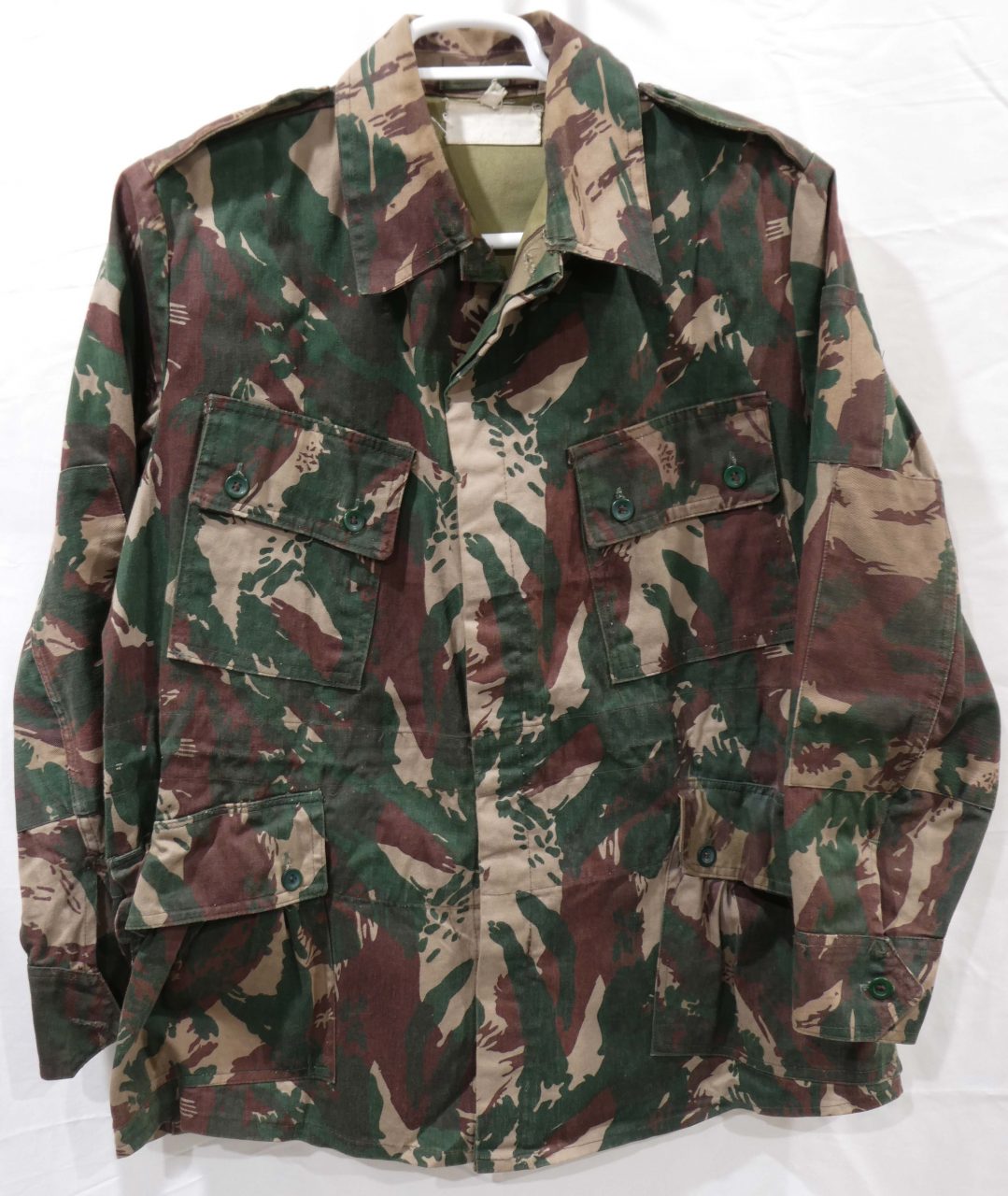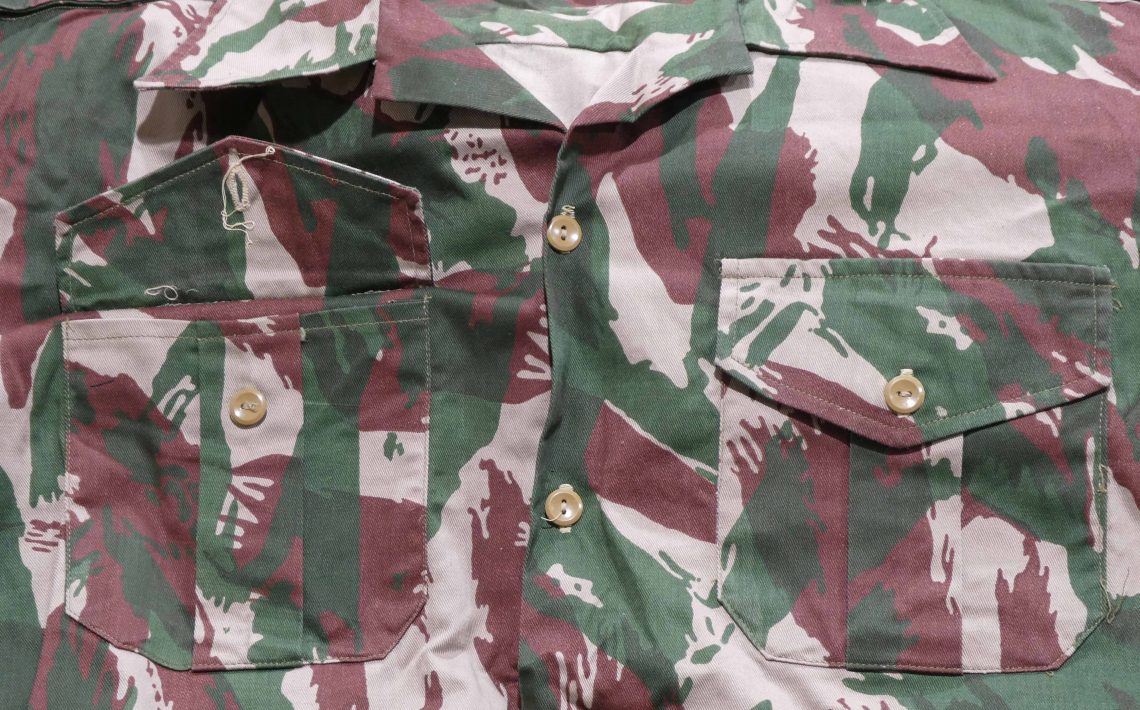After independence, Zimbabwe adopted a distinct vertical lizard pattern in order to distance itself from the Rhodesian period. The pattern in itself may be Rhodesian since similar vertical lizard items were briefly used by the British South Africa Police (BSAP) around 1968 – 1972, and collectors have obtained clothing items in the pattern from BSAP veterans (source: https://newrhodesian.ca/viewtopic.php?f=45&t=692).
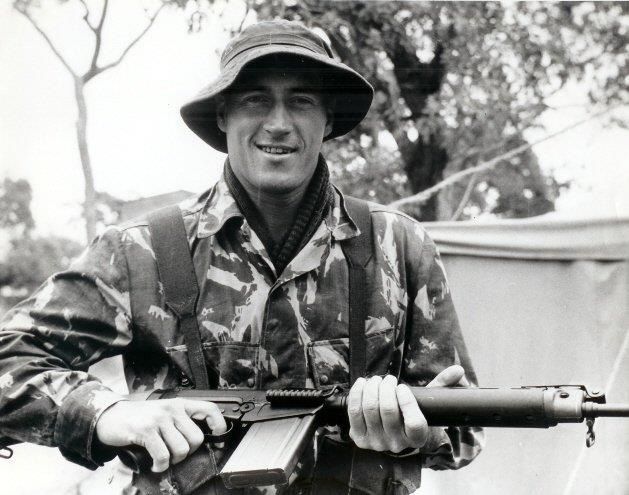
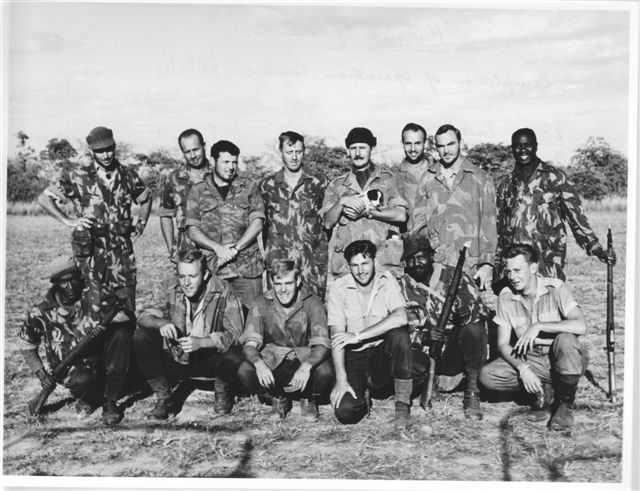
Dry Season:
Most items of this pattern are in the dry season colorway with a tan background.
Jacket:
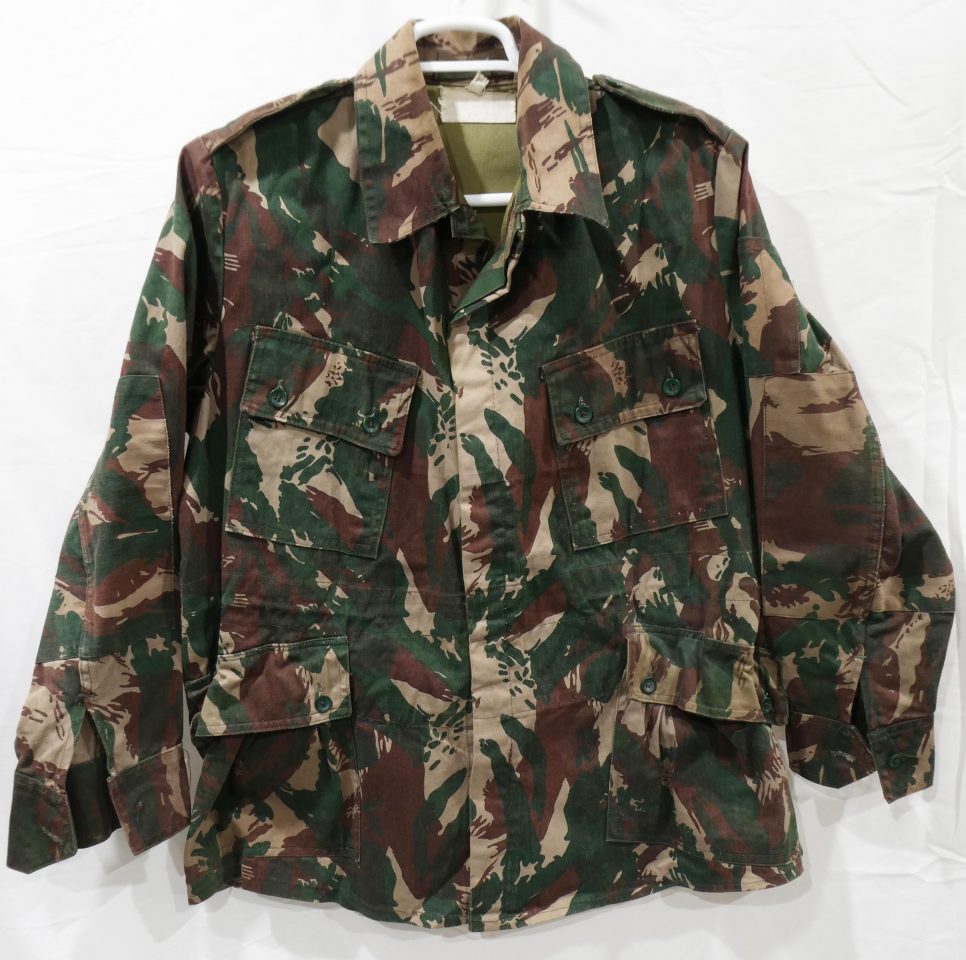
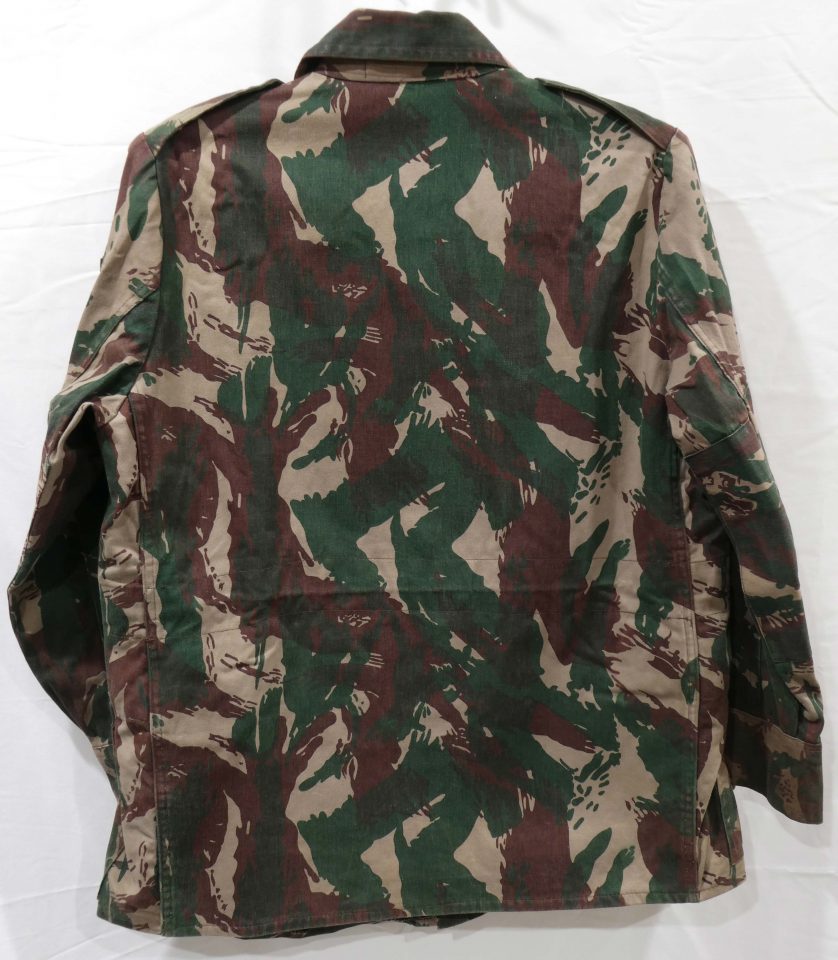
Cut exactly like the straight pocket flap, later Rhodesian jacket. This particular jacket was made from fabric from different dye lots giving it a patchwork appearance. These variations seem to have been fairly common for Zimbabwean lizard items (source: https://www.newrhodesian.ca/viewtopic.php?p=5659#p5659).
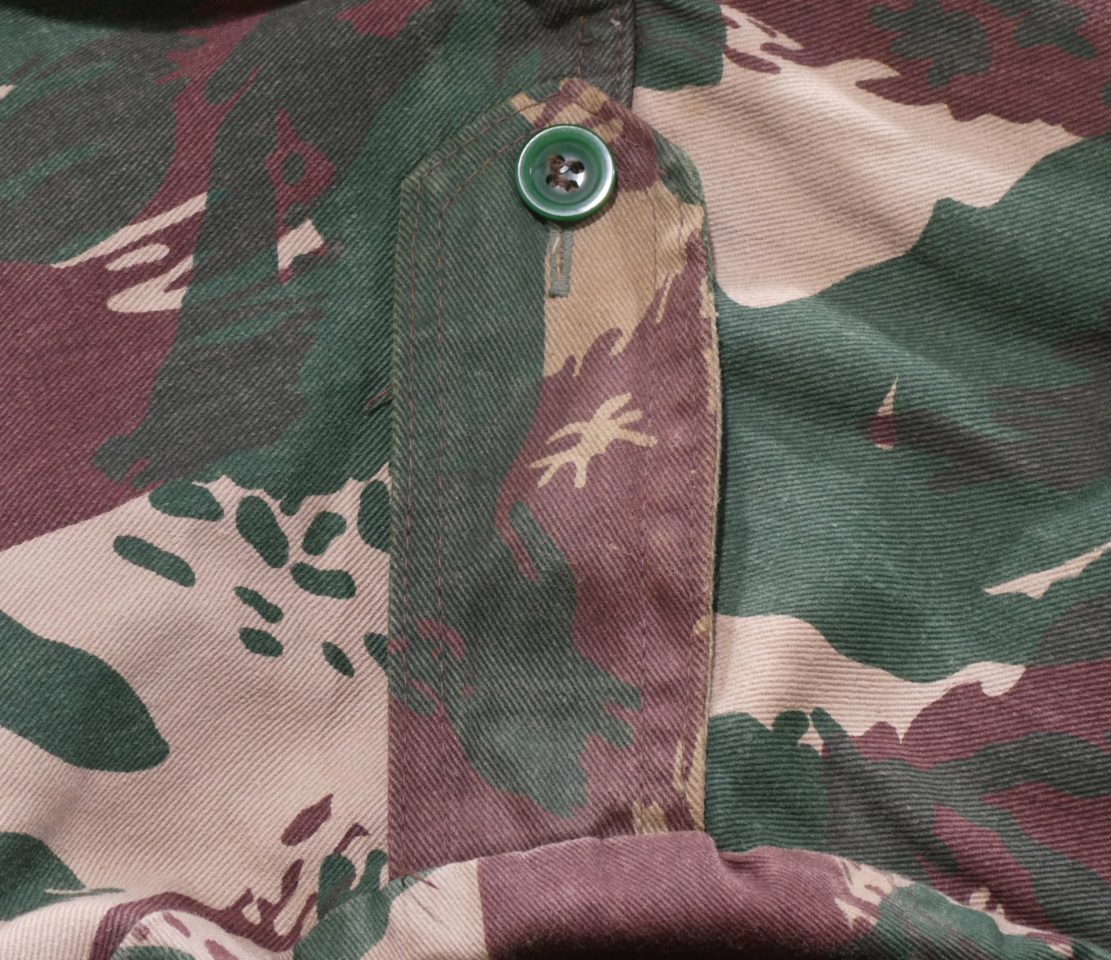
Tags:

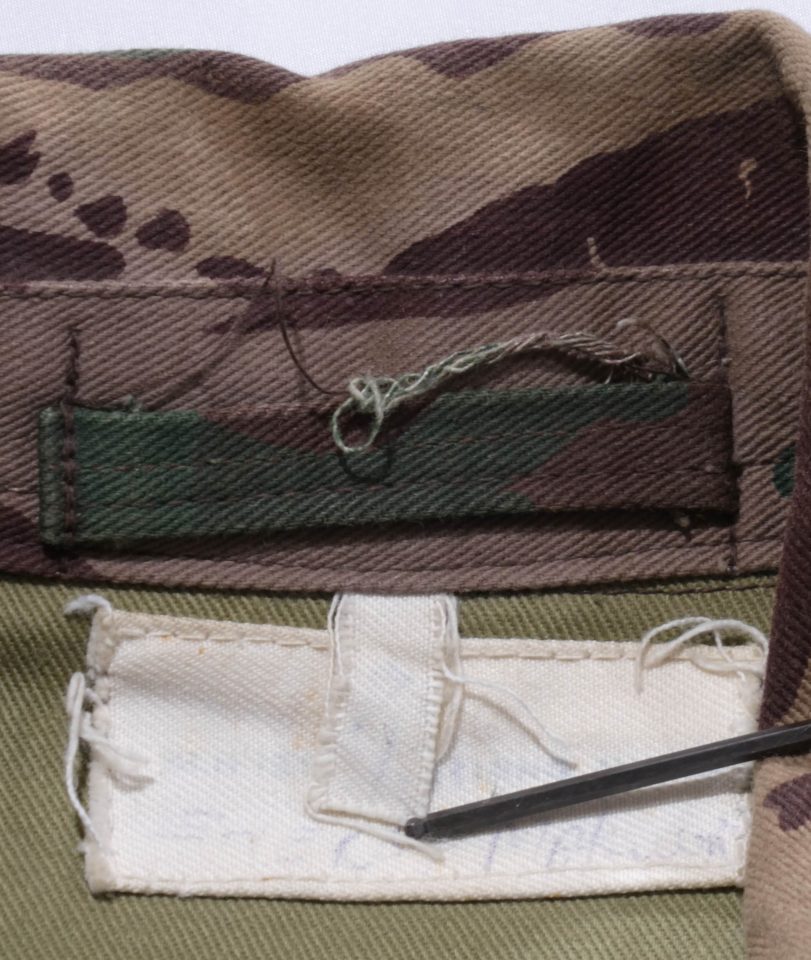
Name written on larger tag. Manufacturer info has largely faded away.
Pockets:
Lower pockets have elastic, again like the Rhodesian predecessor.
Arm Pocket:
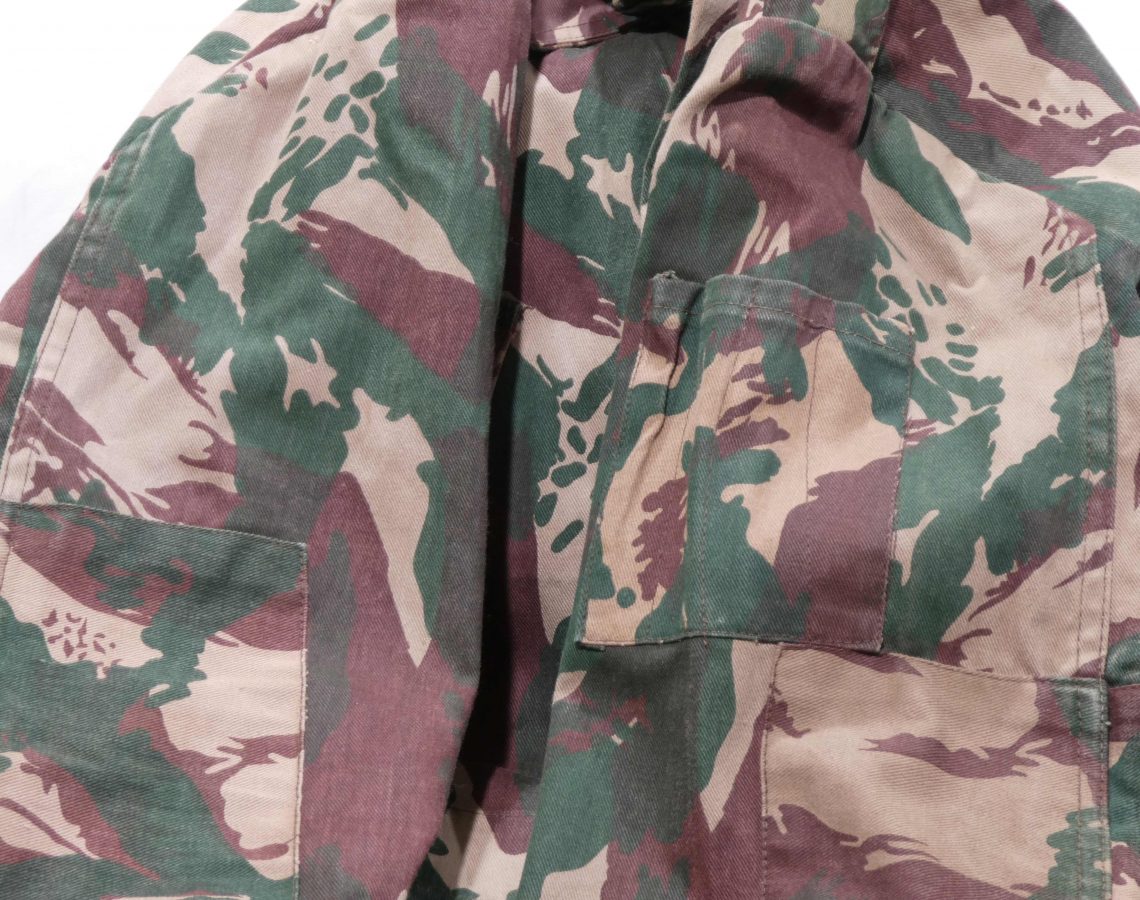
Pen pocket on left arm, again like the Rhodesian predecessor.
Cuffs:
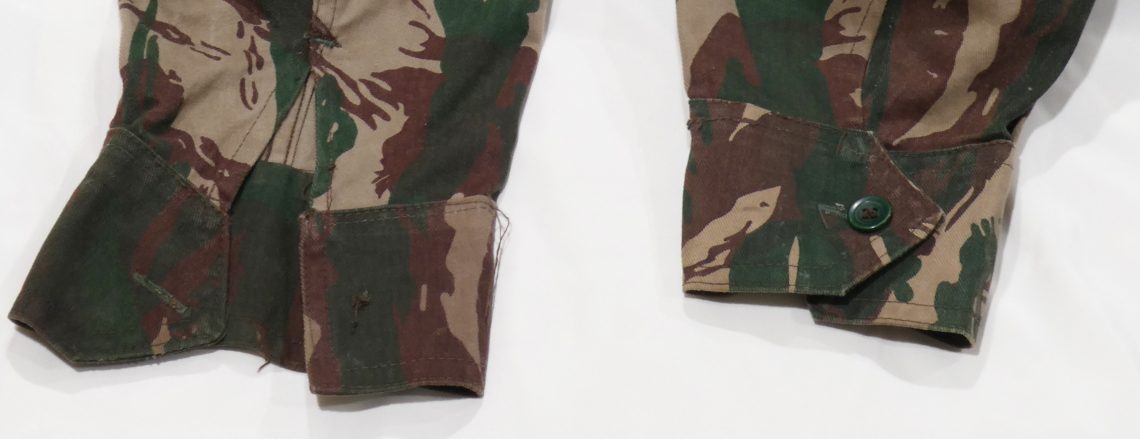
Inside Liner:
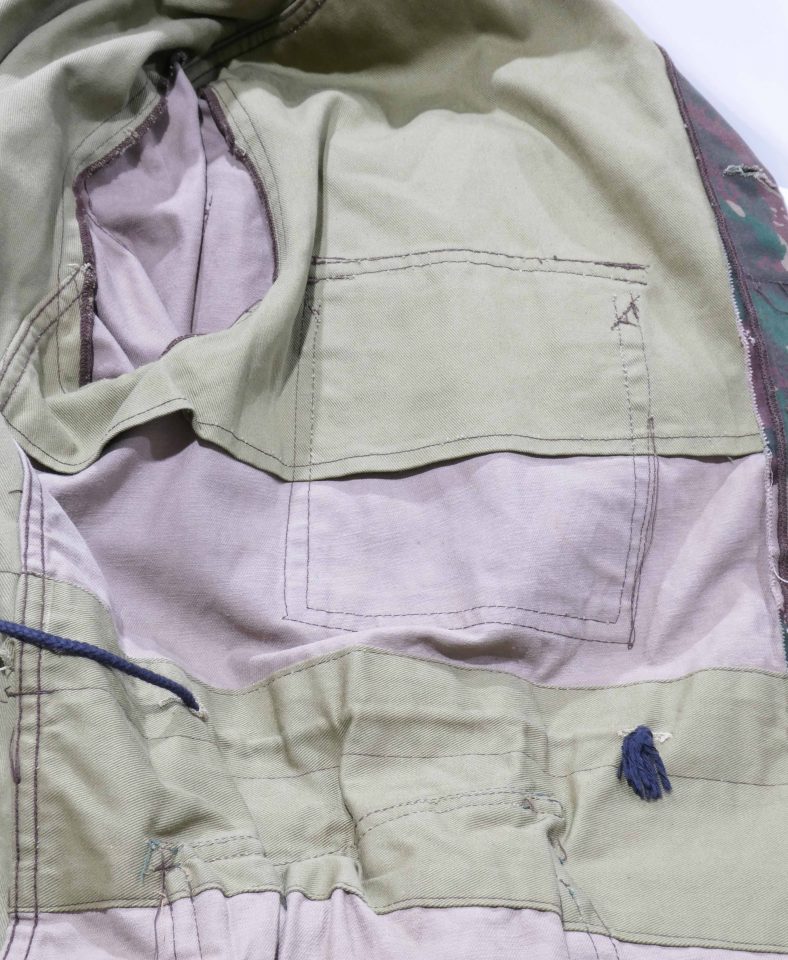
Same layout and materials as Rhodesian version.
Trousers:
These particular trousers are made from a darker dye lot than the majority of the bush jacket.
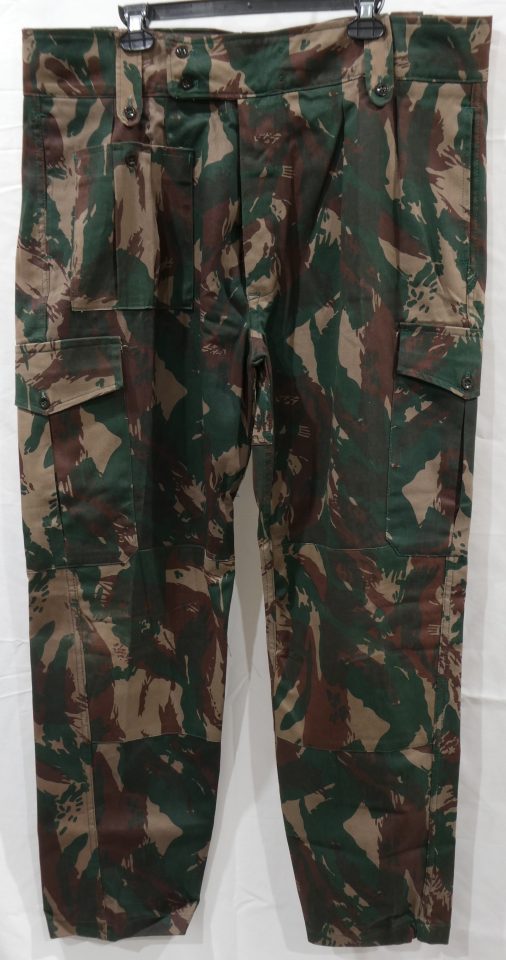
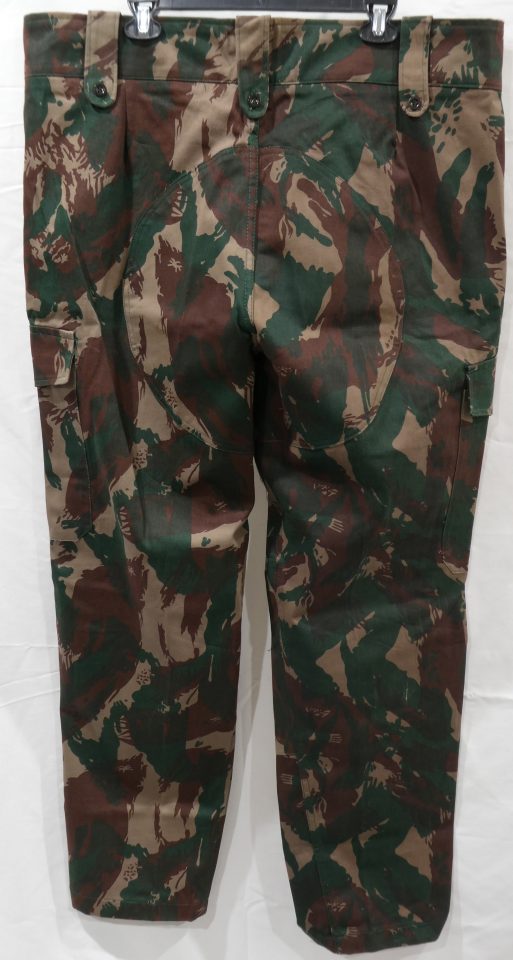
Tag:
Same British battledress style cut like Rhodesian trousers.

Fly:

Bright, almost “emerald”, green stitching like later Zimbabwean uniforms.
Pockets:
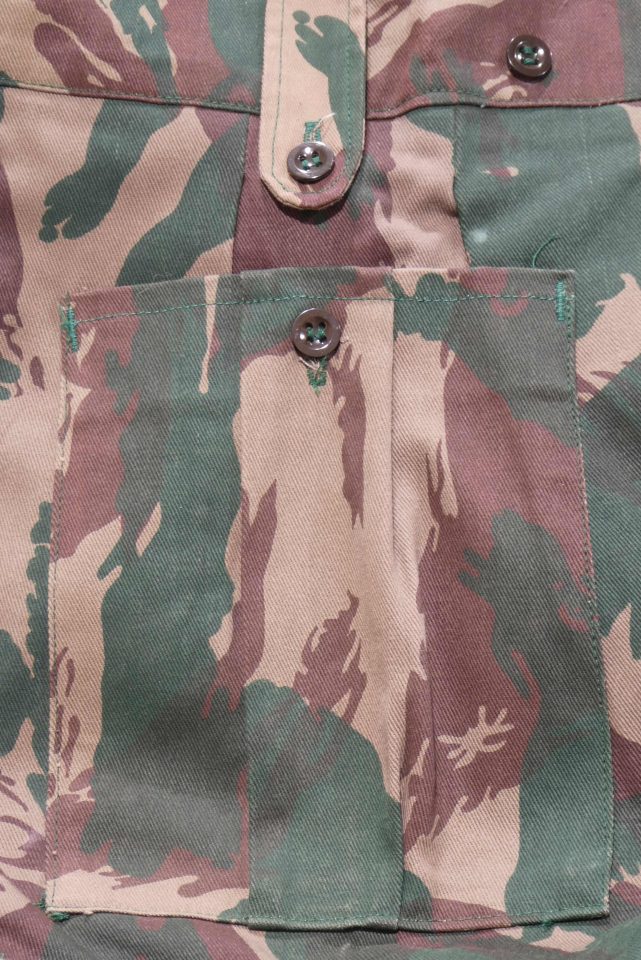

There is also a shirt in the dry season colors in the same cut as the wet season one below.
Comparison of Jacket and Trousers Fabric:

The pants’ fabric is darker than the jacket’s.
Shirt:
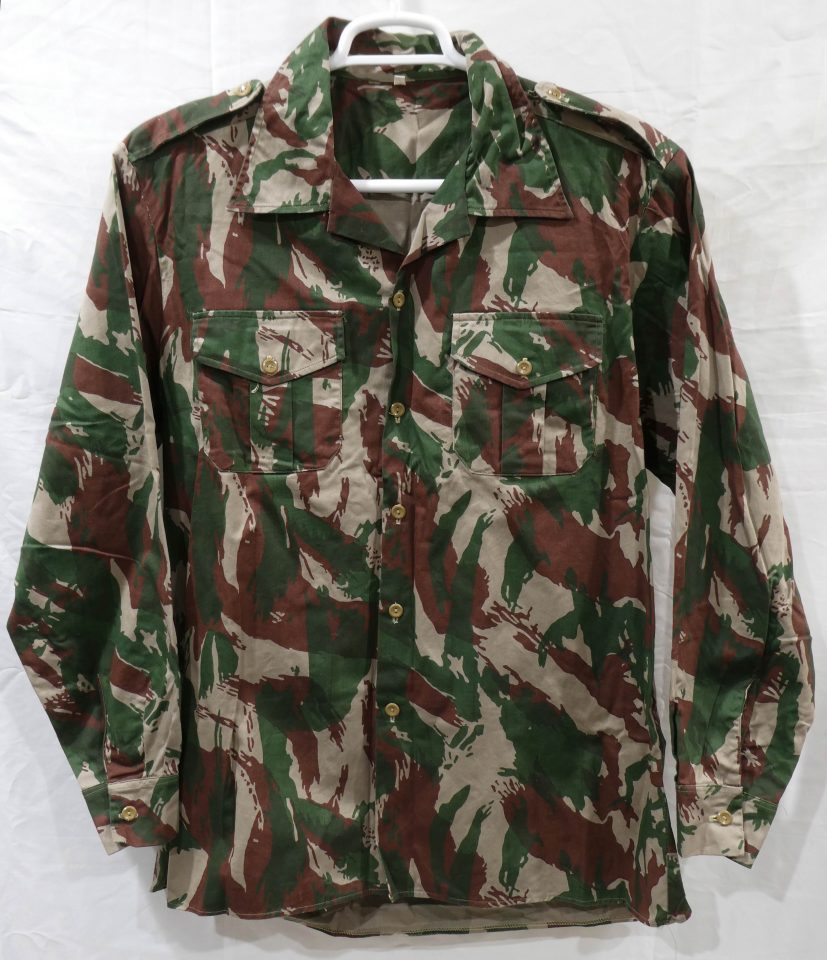
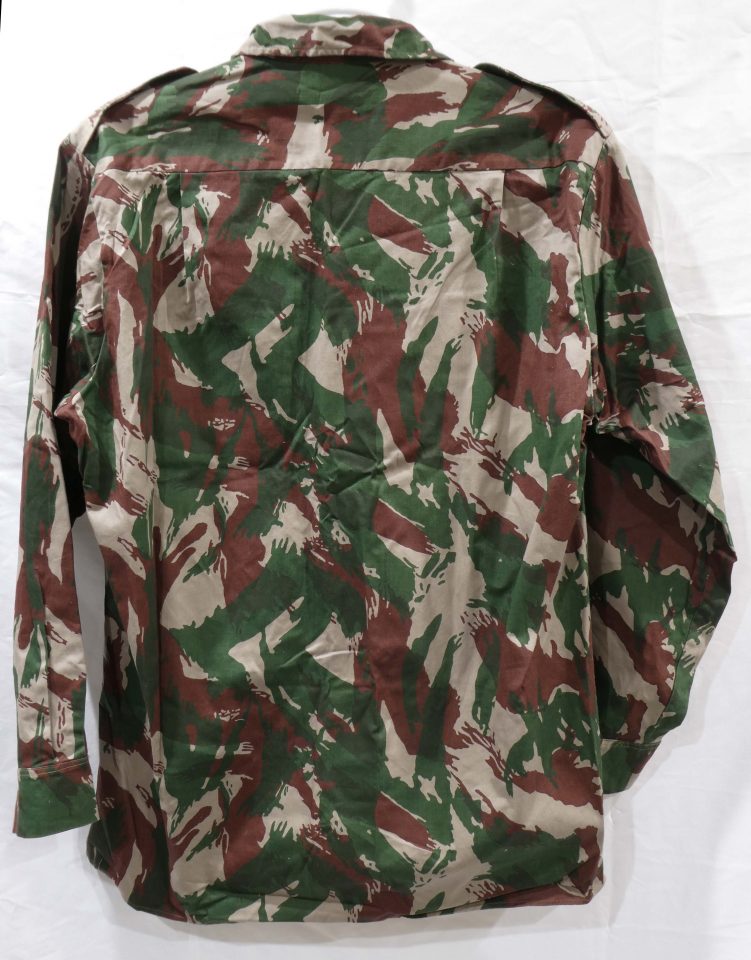
Fabric is thin like earlier Rhodesian and wet season versions of the shirt. The shirt appears more often in photographs than the dry season jacket.

Tag:
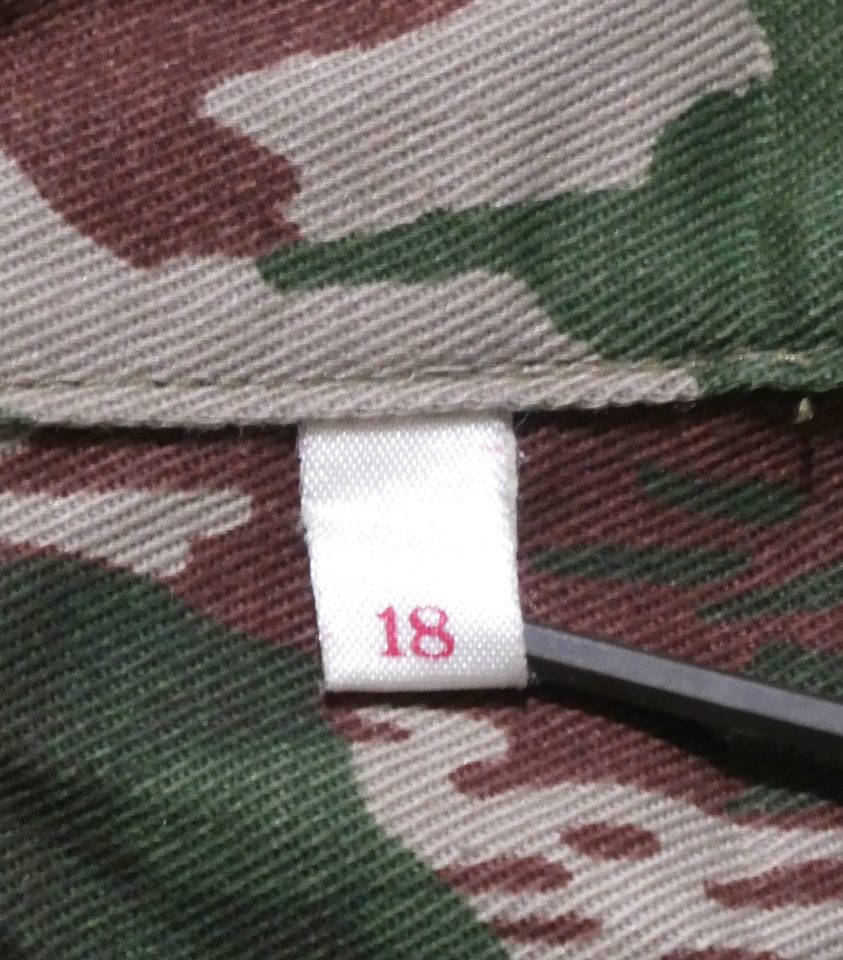
The size is numeric, not a letter.
Pockets:
The pocket flaps on the shirt are simplified triangles compared to the scallops on the wet season version below.
Cuffs:

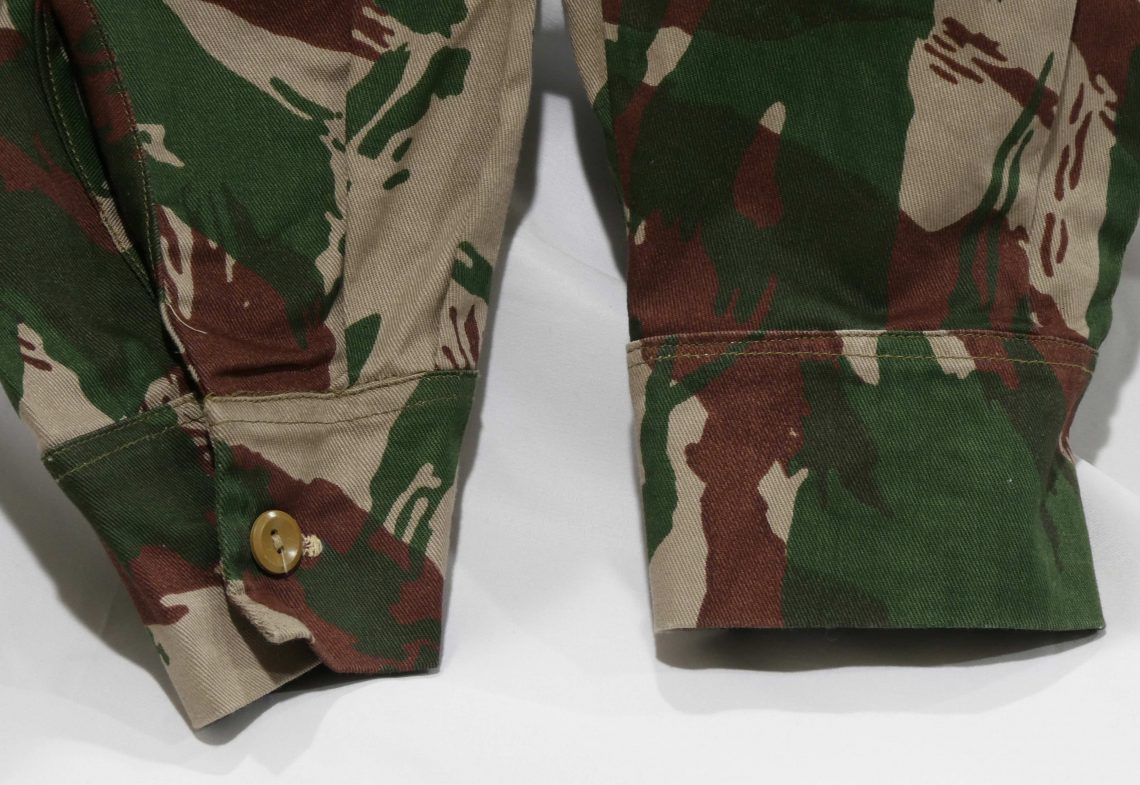
Note the 2-hole buttons. The shirt may also have 4-hole buttons.
Inside Stitching:
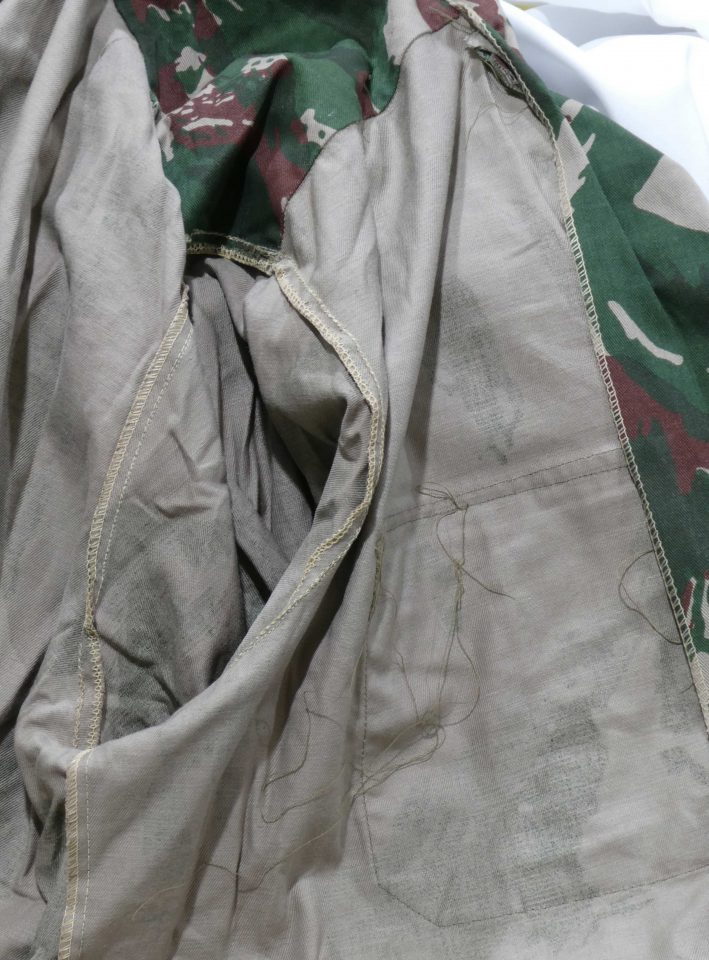
Wet Season:
The wet season version was made in much smaller quantities than the dry season version (source: https://www.newrhodesian.ca/viewtopic.php?f=45&t=547). The colors are more similar to one version of the known Rhodesian trial garments’ colors (source: https://newrhodesian.ca/viewtopic.php?f=45&t=692). Wet season items were made in the same cuts as the dry season ones.
Jacket:
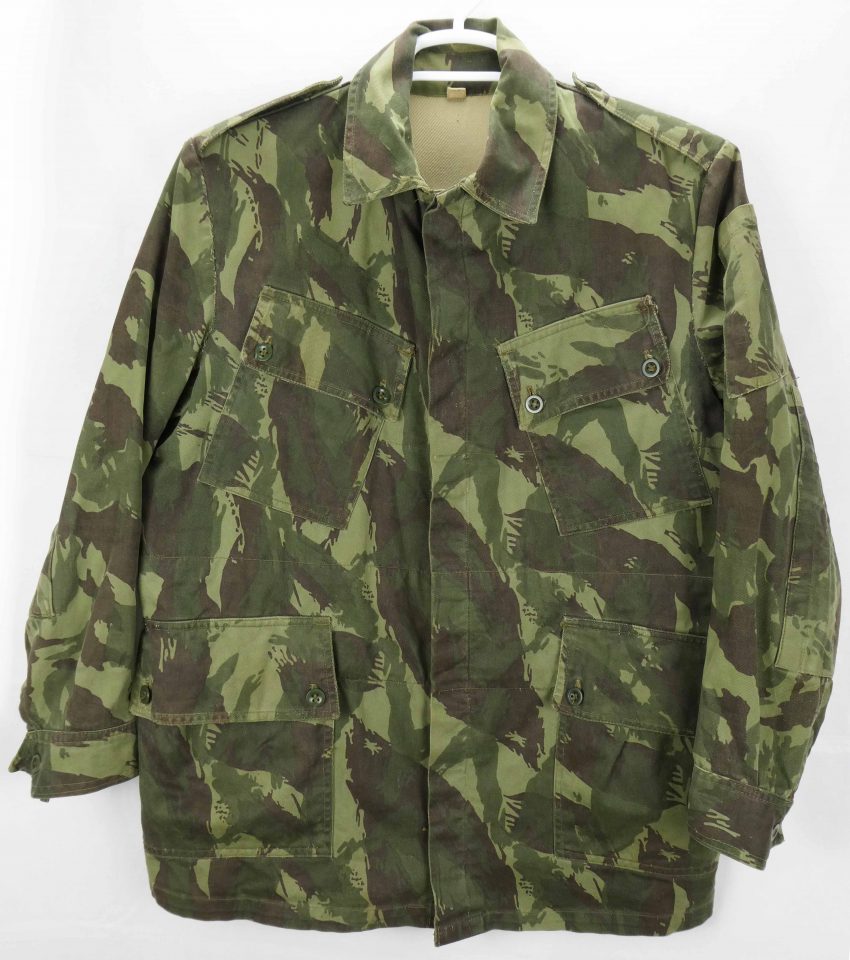

Most features are like dry season version, above.
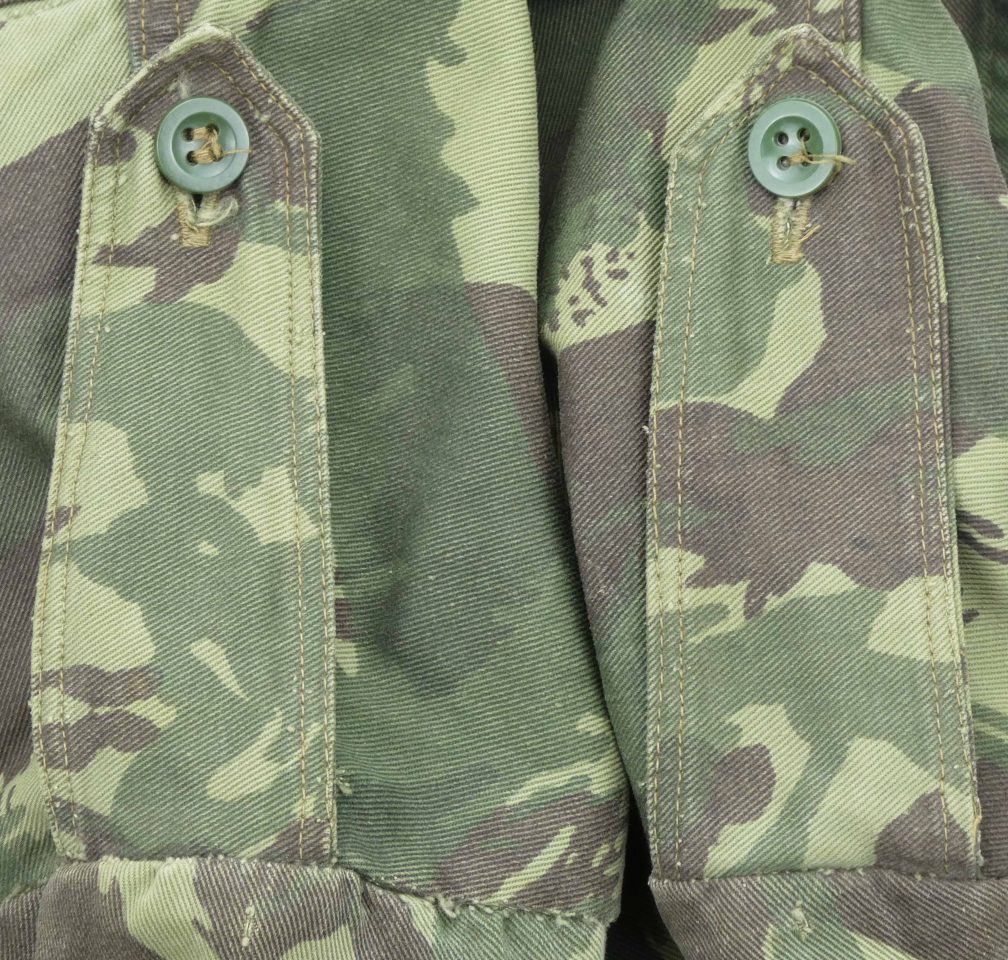
Tag:
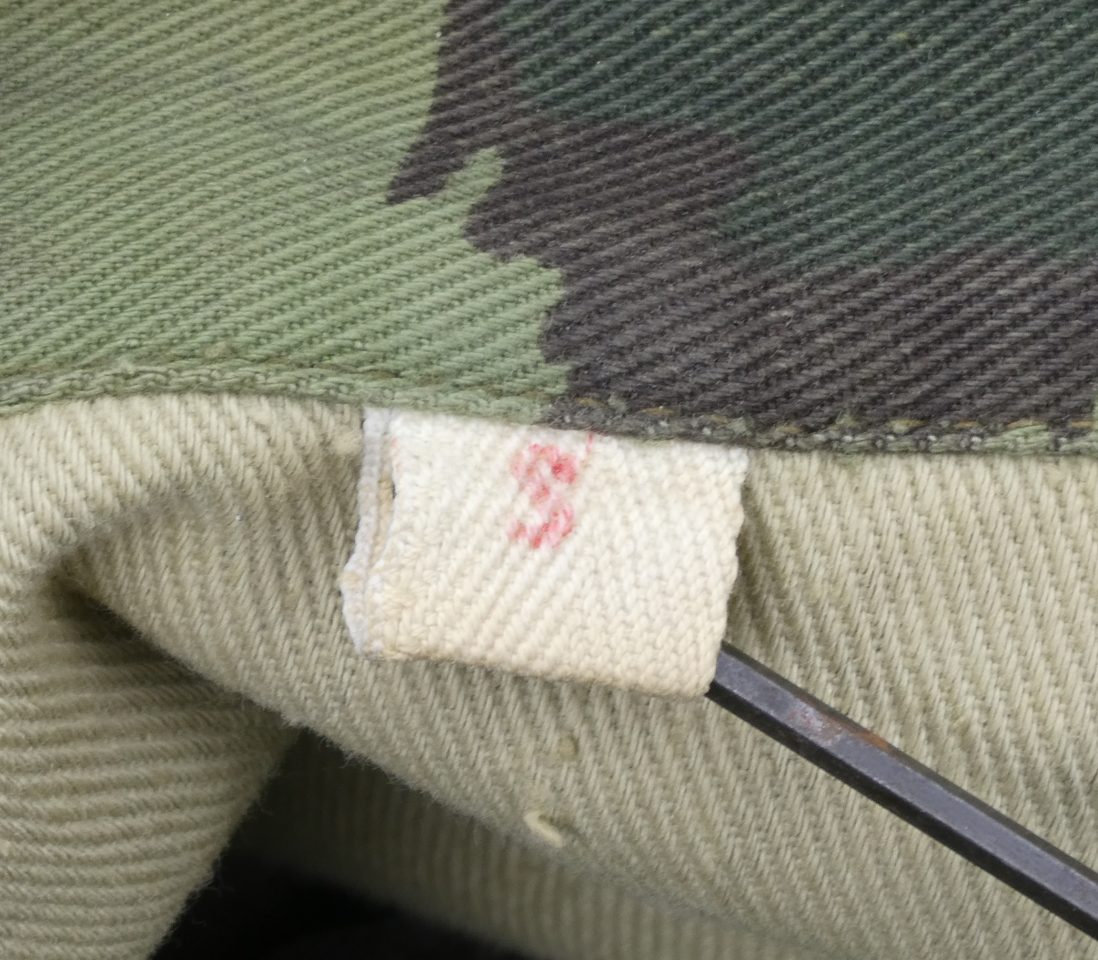
Letter size.
Pockets:
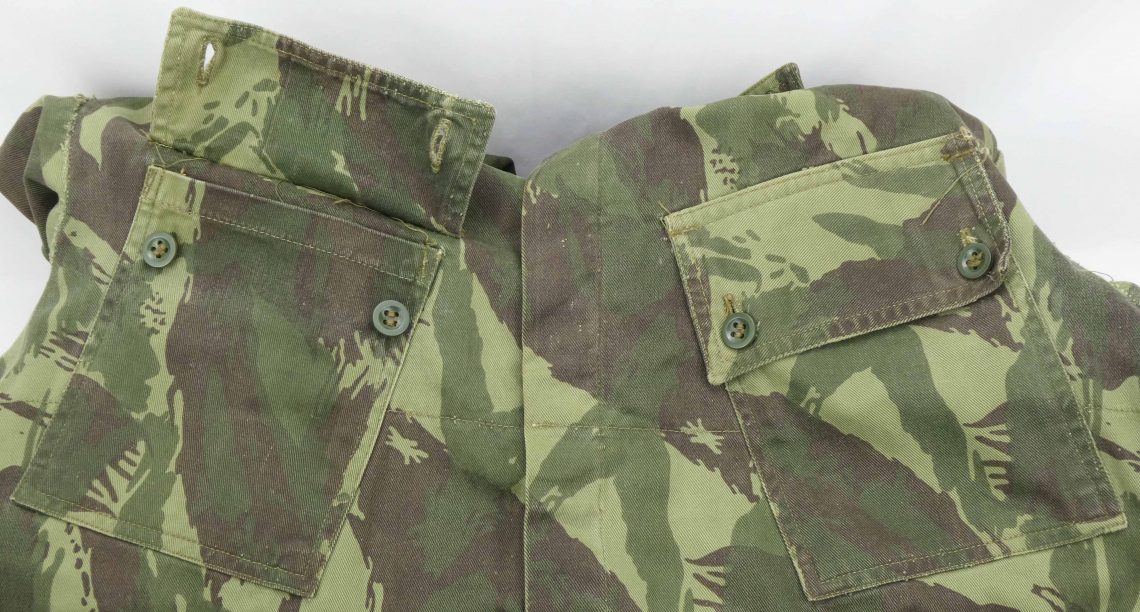
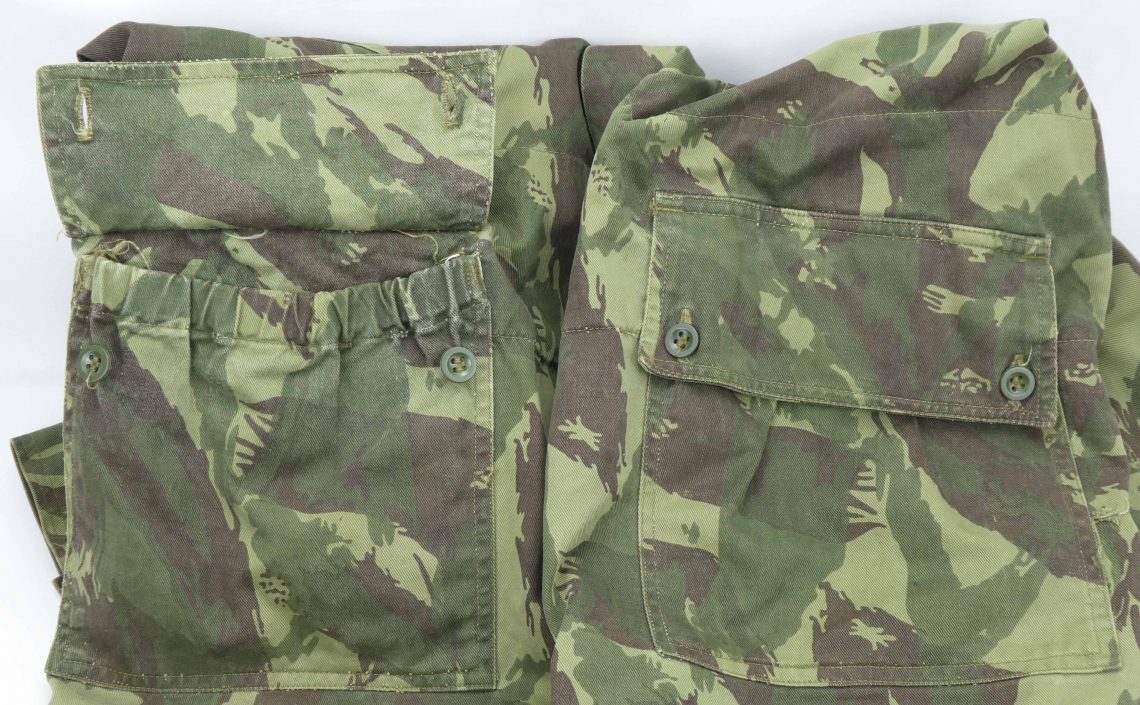
Same as Rhodesian combat jacket cut.
Arm Pockets:

Elbows:

Has reinforcement stitching, unlike dry season version above. No plastic reinforcement material inside. Has evidence of abrasion from use.
Cuffs:
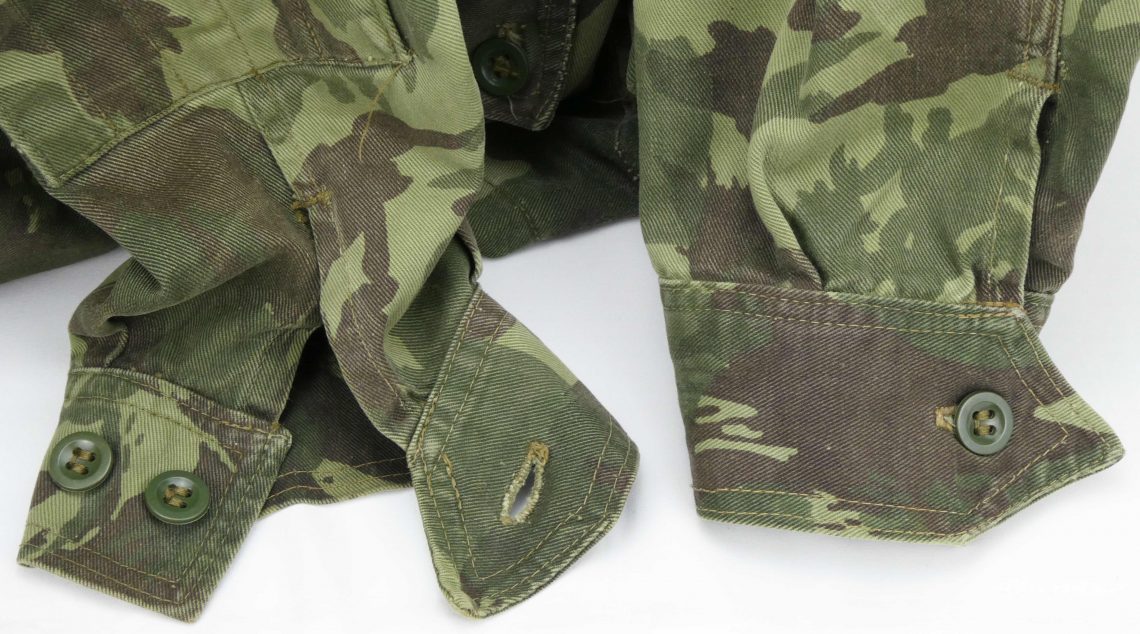
Inside:
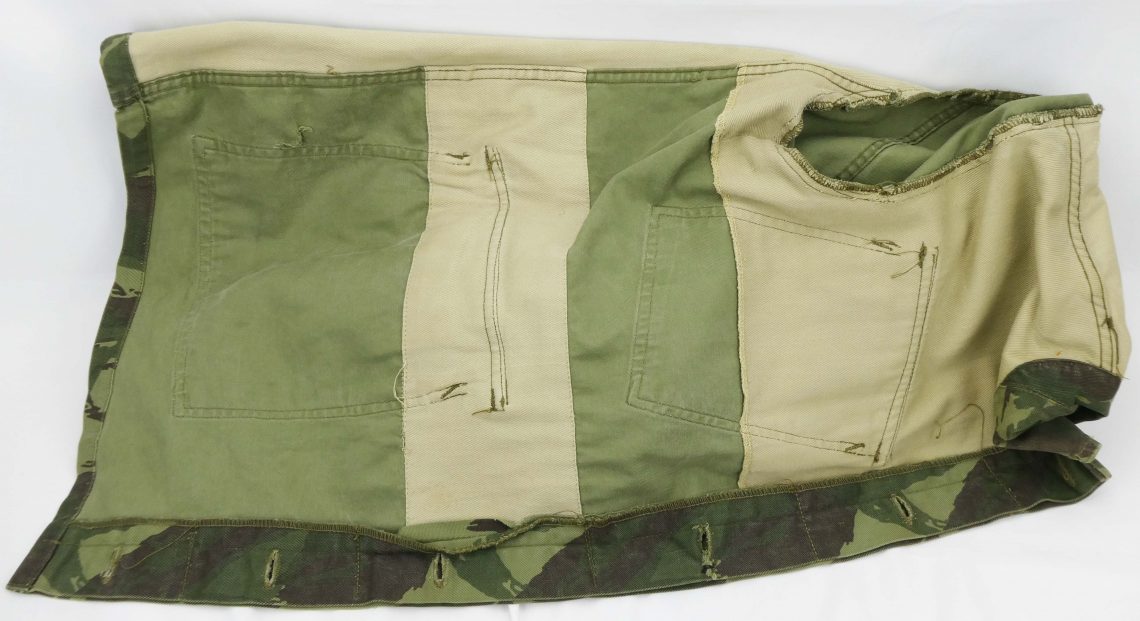

Shirt:
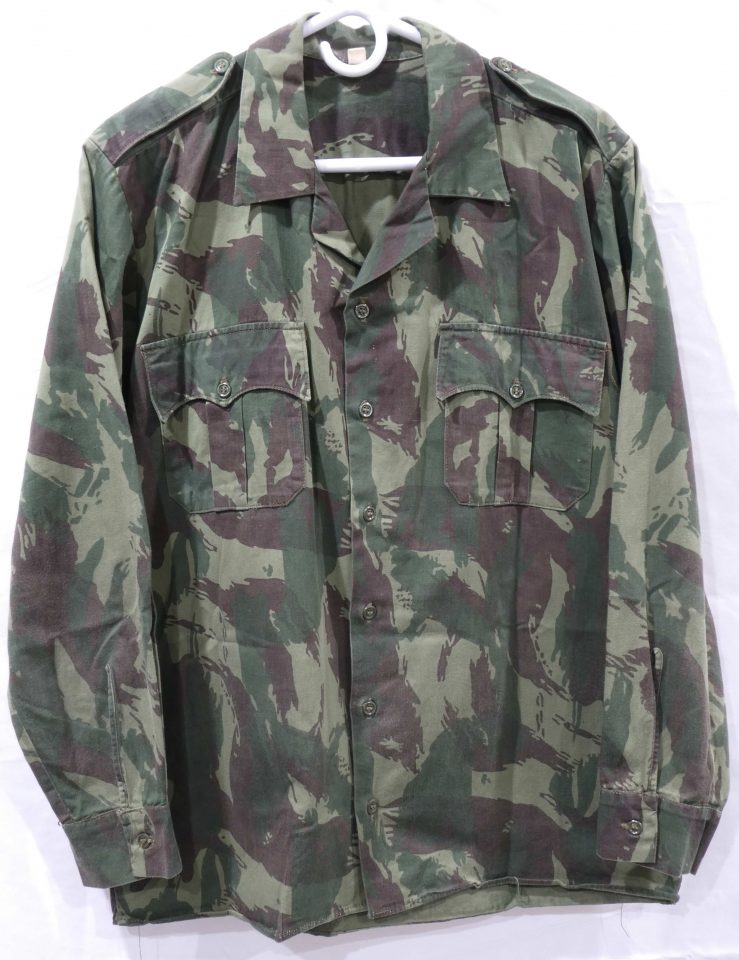

Lighter fabric than jacket and pants. Unlike the Rhodesian items, there are no Portuguese style reinforcements on the shirt (source: https://newrhodesian.ca/viewtopic.php?f=45&t=692).
Tag:
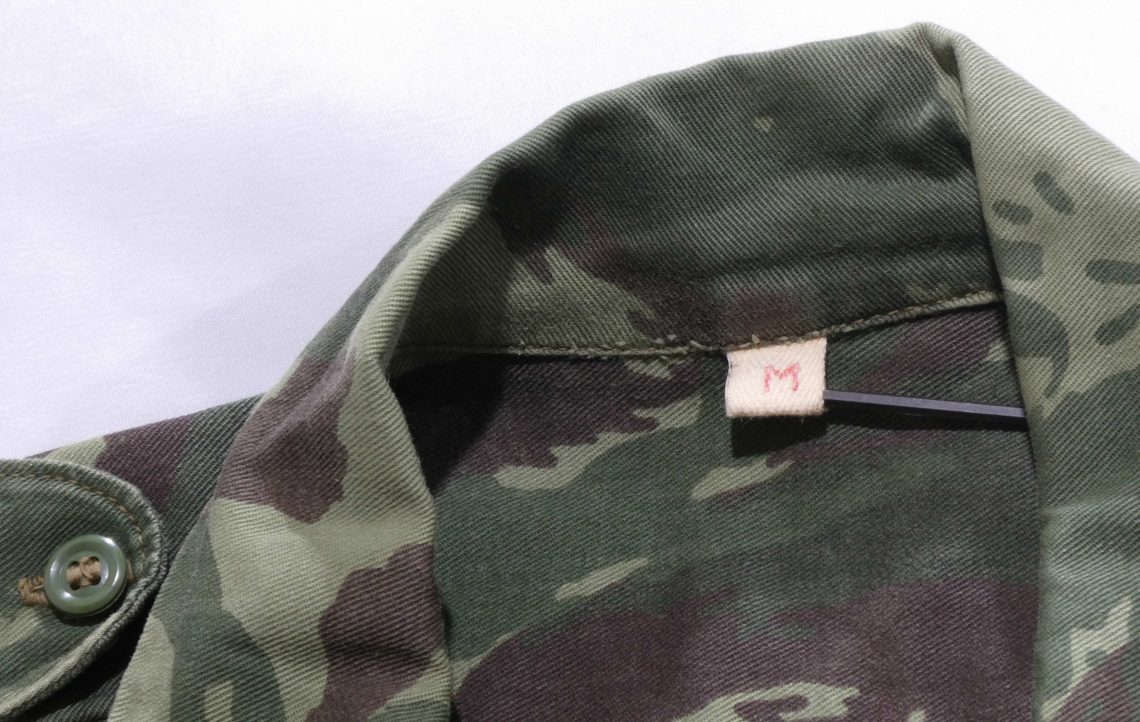
Simple Rhodesian style size tag. This is consistent with the example here: https://www.newrhodesian.ca/viewtopic.php?p=5664#p5664.
Pockets:
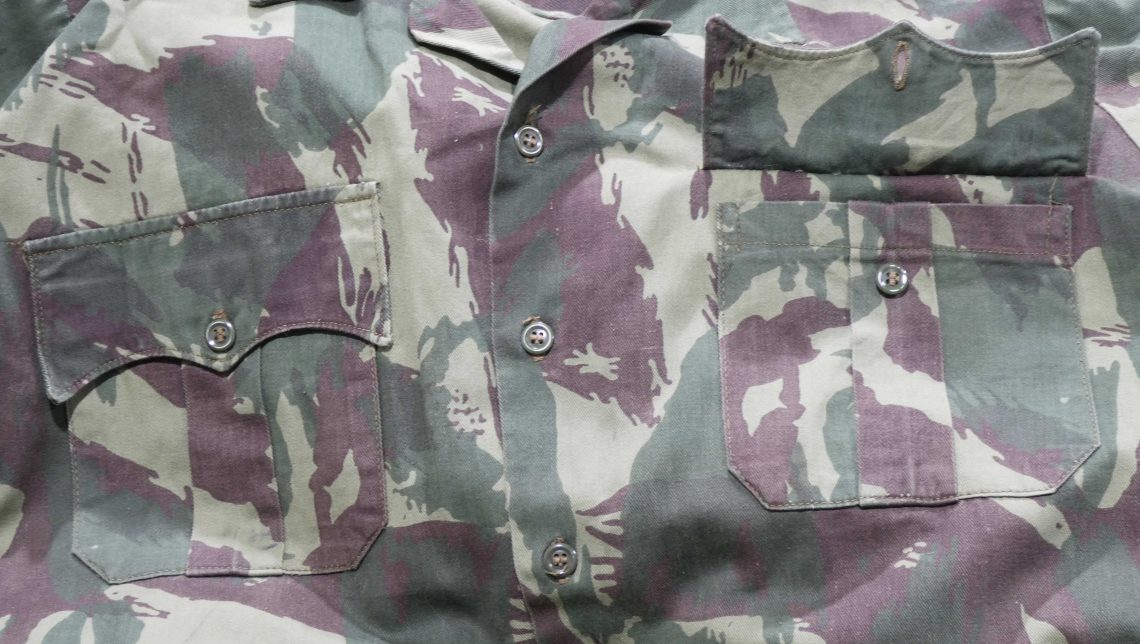
Same scalloped shape as Rhodesian version.
Cuffs:
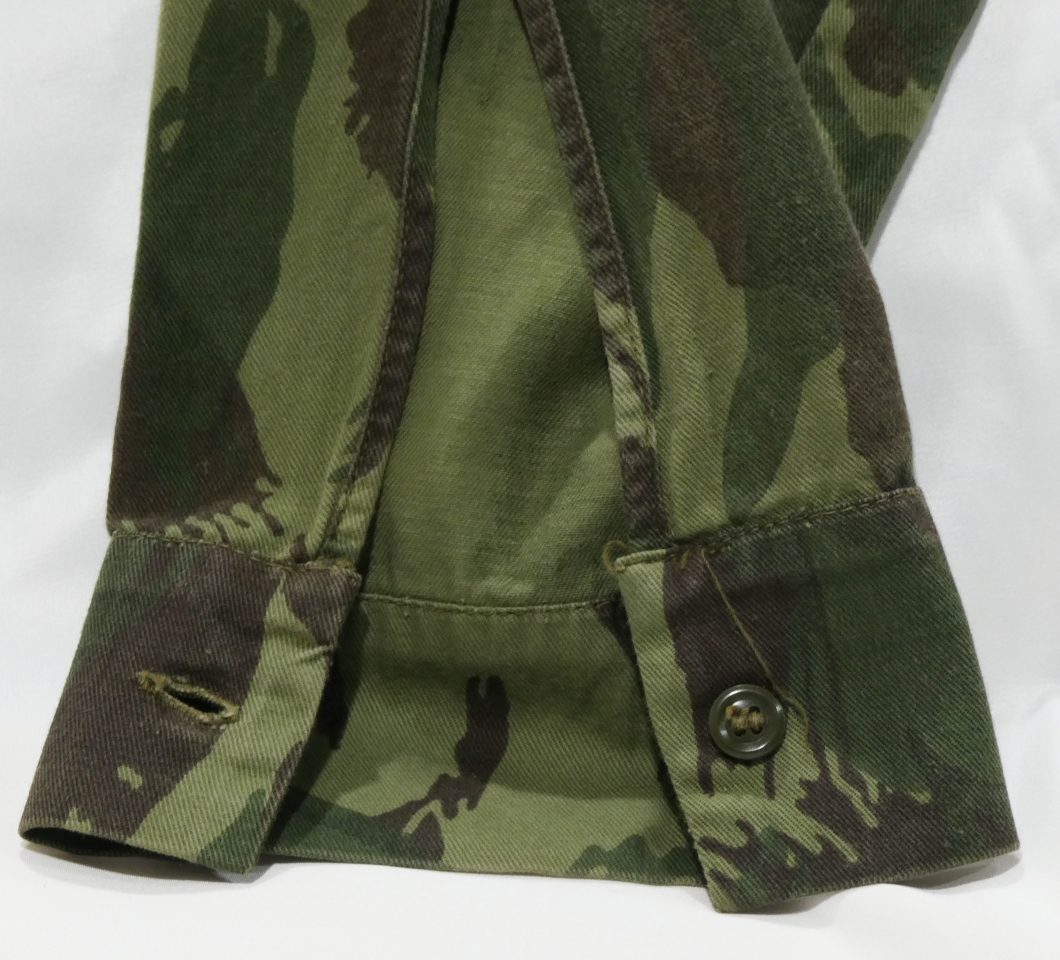
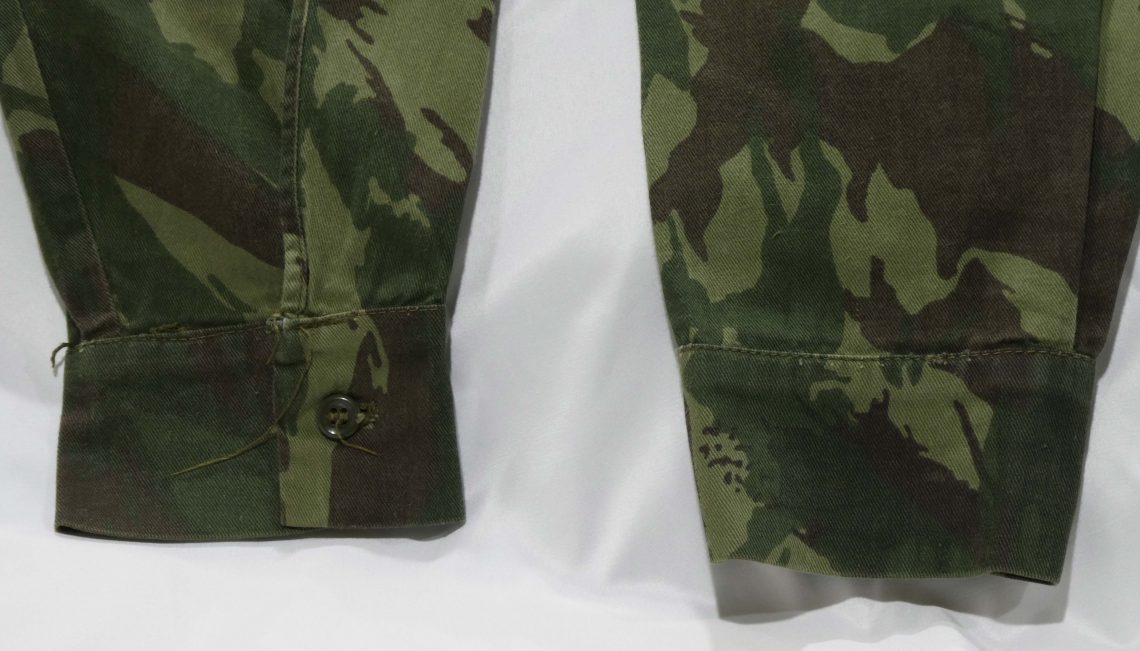
Inside Stitching:

Serged seams and careful construction unlike the dry season jacket above and more recent Zimbabwean uniforms.
Comparison of Wet and Dry Season Patterns:

Same shapes, even accounting for thinner fabric of wet season shirt.
Usage Photos:
The Zimbabwean National Army used items in this pattern, mostly the dry season version, throughout the 1980’s, until 1995 [4].
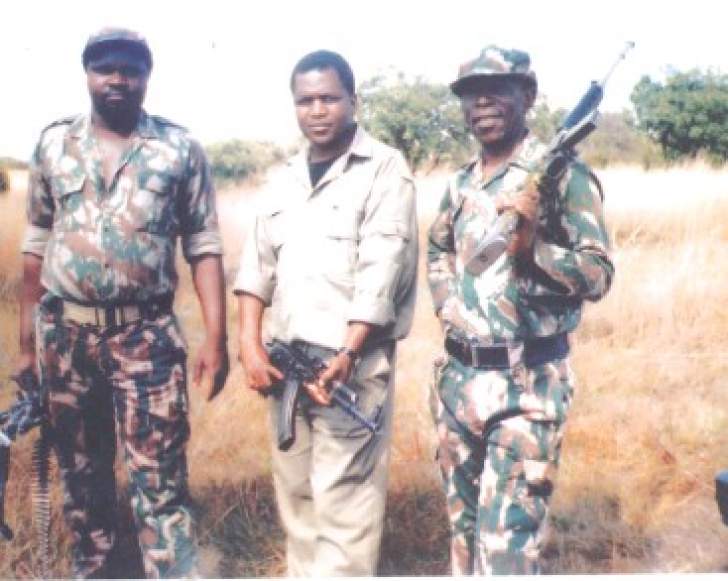
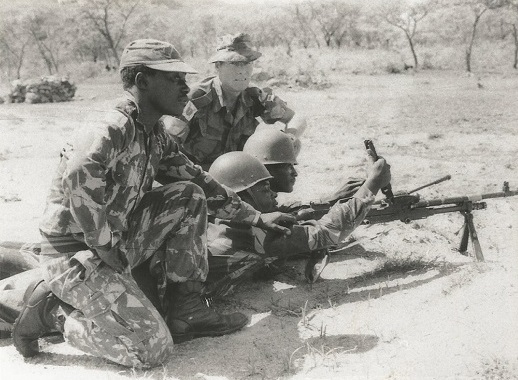
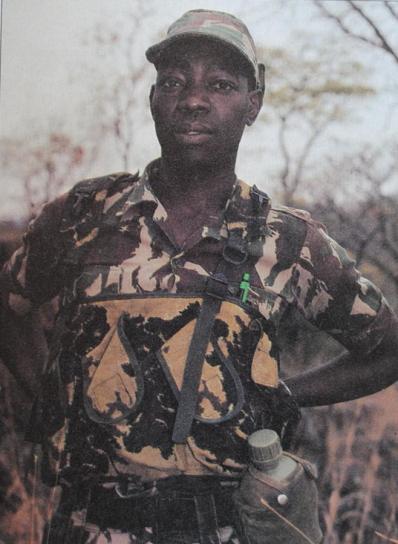
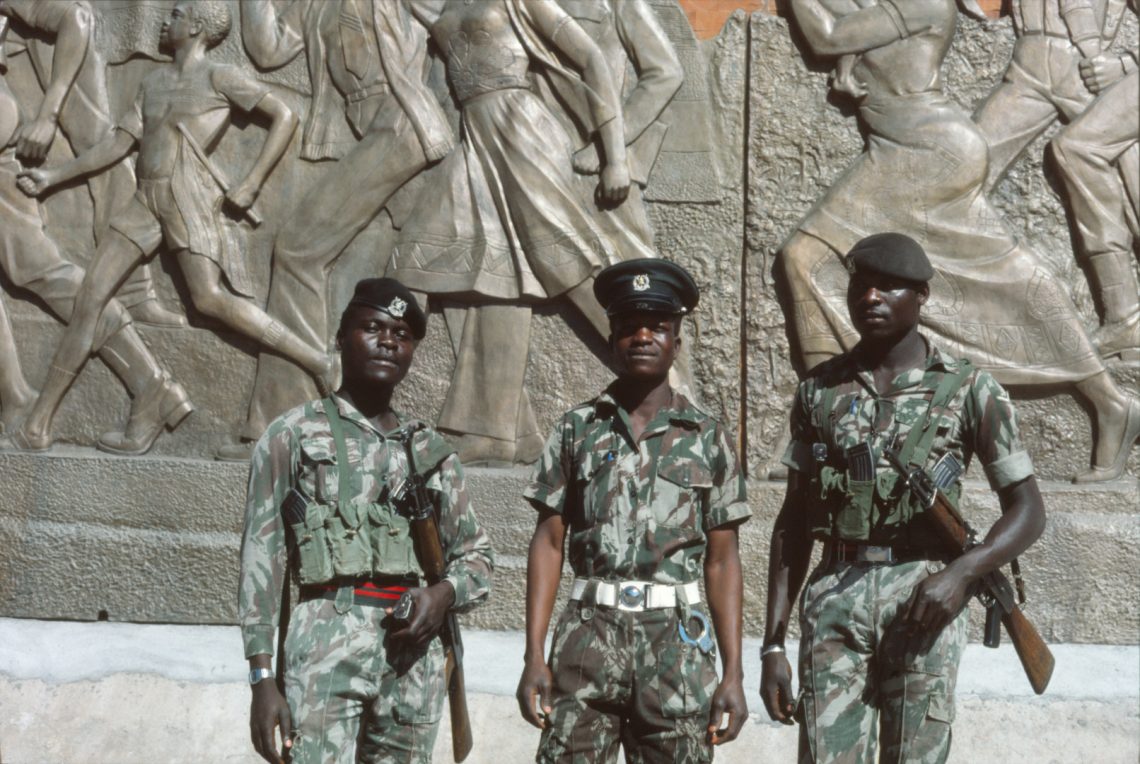
It was most infamously used by the 5th Brigade during the Gukurahundi massacres in 1982.
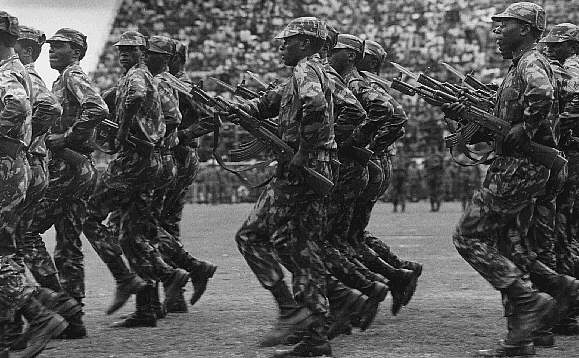



For more information about the Gukurahundi massacres (WARNING: GRAPHIC FOOTAGE) :
https://www.youtube.com/watch?v=f6Zie7OoRDY
https://www.youtube.com/watch?v=CJPIy-DgG04
https://www.youtube.com/watch?v=j6GUlX47BgQ
The pattern was in use as late as 1993, just before Zimbabwe reverted back to their version of the Rhodesian brushstroke pattern.

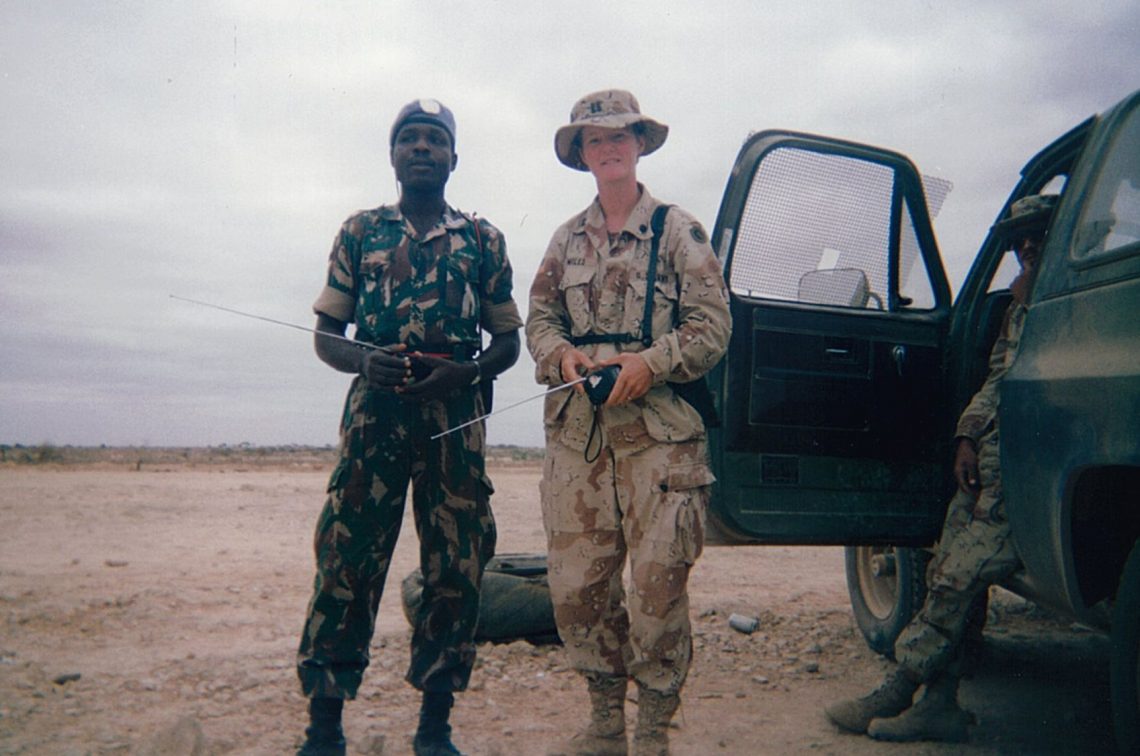
Similarities to Transkei Camouflage:
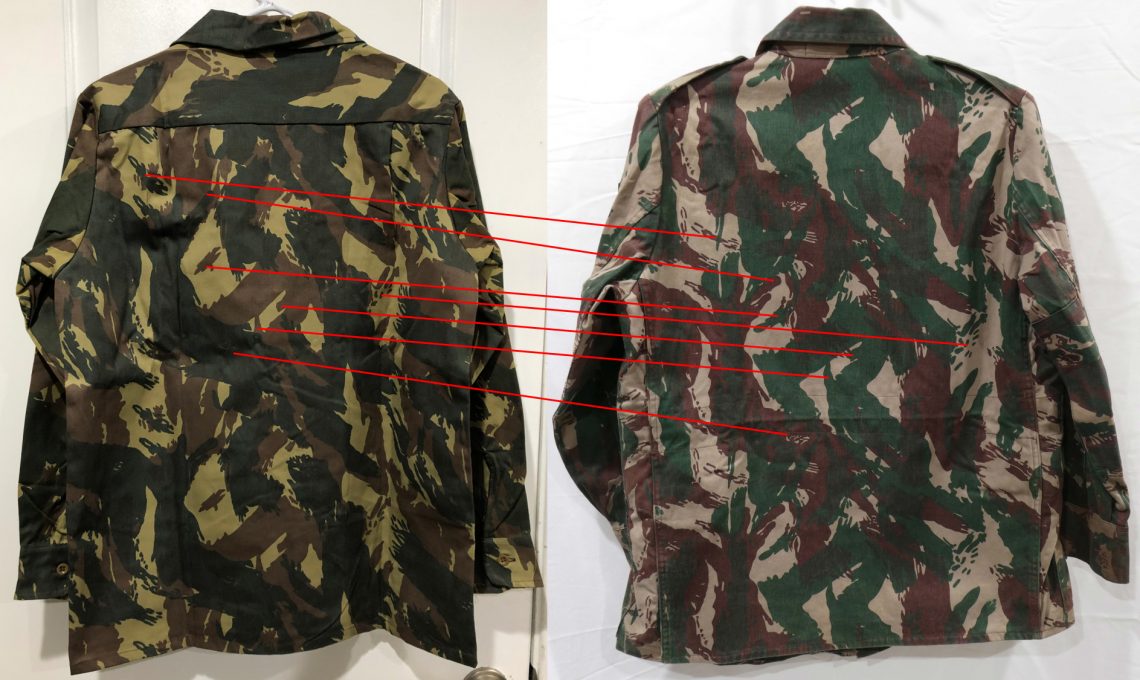
The Transkei camouflage pattern’s shapes are a very close copy of the Zimbabwean lizard pattern. However, the darker brown and green brushstrokes appear to be inverted. The cut of the Transkei uniform items very closely resembles that of the Zimbabwean lizard items, and the Rhodesian ones by extension. This resemblance may be intentional since many former Rhodesians also served as advisors to the Transkei Defense Force [15].
